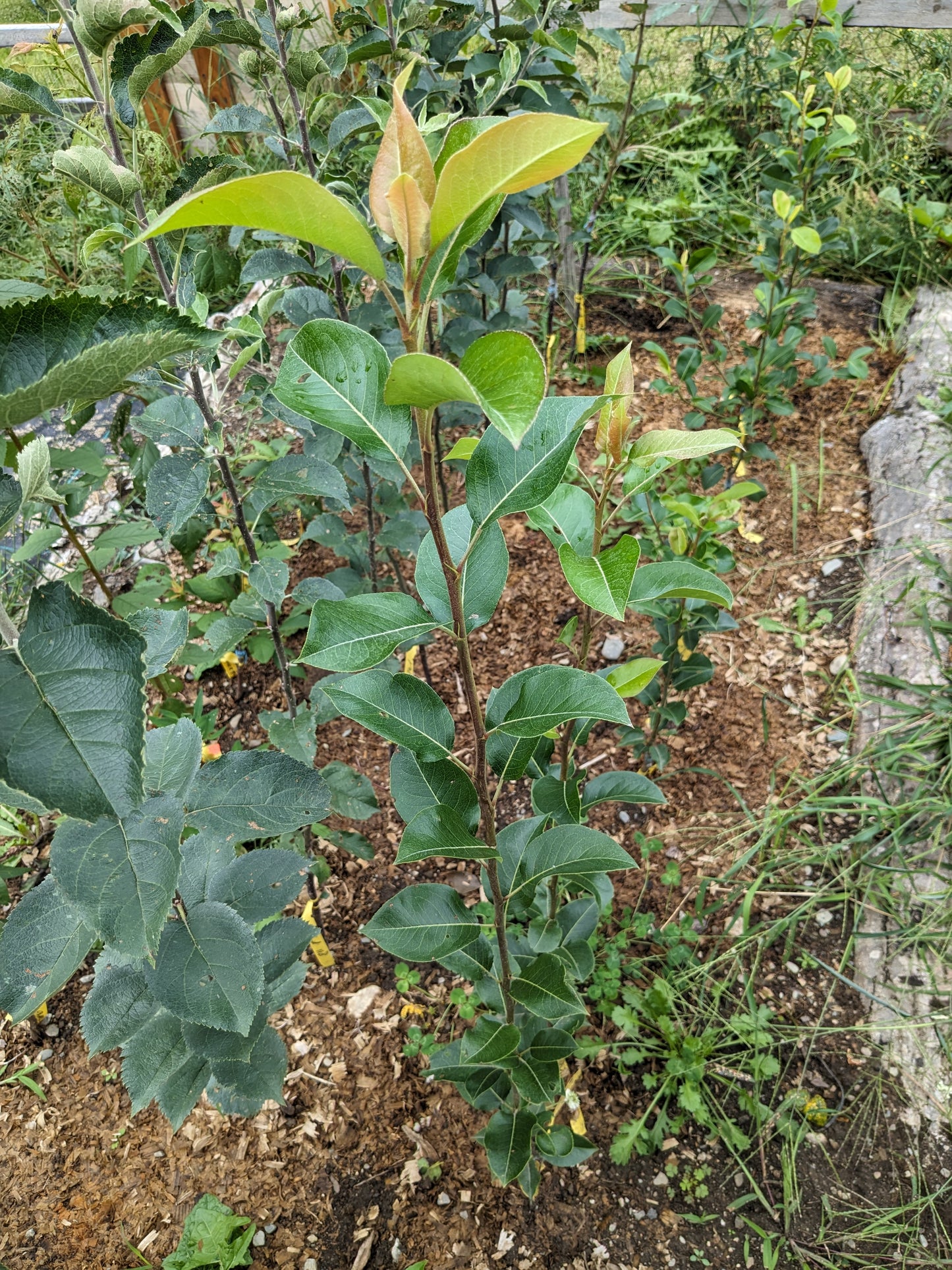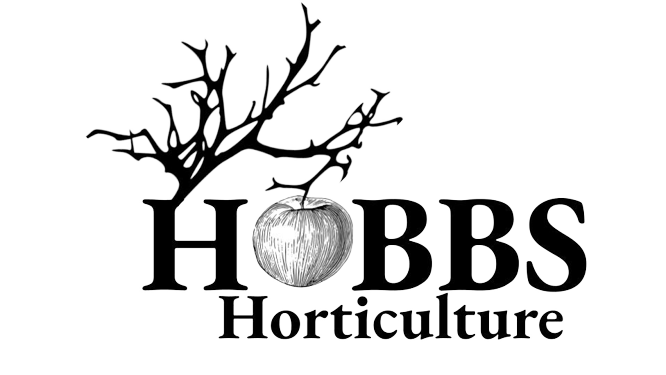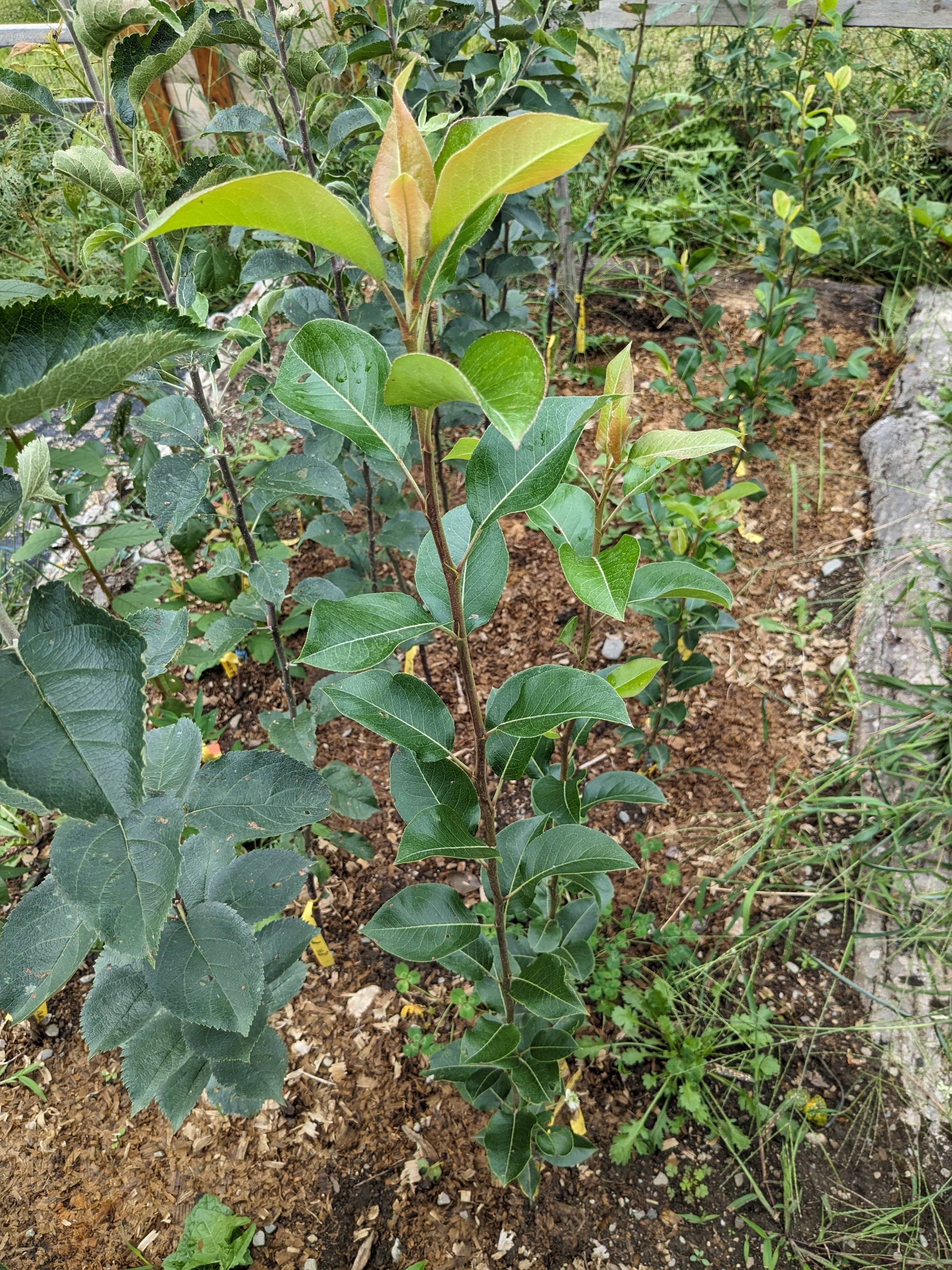Hobbs Horticulture
Grafted European pear tree - 1st year whips
Grafted European pear tree - 1st year whips
Couldn't load pickup availability
(Pyrus communis)
Grafted to OHxF97 pear rootstock.
**Special Note: We only offer small first year grafted trees (known as whips) through our mail order business (larger trees available locally). To protect the young graft and avoid costly shipping surcharges we often have to head back our taller grafted trees before shipping.
| Cultivar | Bloom Time | Ripening Window | Primary Uses |
|---|---|---|---|
| Aurora | Midseason | Late Sept–Oct | Dessert, fresh eating |
| Bell | Midseason | Early–mid Sept | Fresh eating, canning |
| Blake’s Pride | Midseason | Early Sept | Dessert, good disease resistance |
| Bosc | Mid–late | Mid–late Sept | Dessert, cooking, long storage |
| Clara Frijs | Early–mid | Late Aug–early Sept | Dessert, fresh eating |
| Dana Hovey | Midseason | Oct–Nov | Small but very sweet dessert pear |
| Duchess | Midseason | Oct | Large cooking pear, fair dessert |
| Harvest Queen | Midseason | Late Aug–early Sept | Dessert, early Bartlett-type |
| Honeysweet | Midseason | Mid Sept | Dessert, juicy and aromatic |
| Magness | Midseason | Mid–late Sept | Dessert (Bartlett × Seckel cross) |
| Maxine | Midseason | Mid Sept | Fresh eating, cooking |
| Moonglow | Midseason | Aug–early Sept | Fresh eating, processing |
| Seckel | Mid–late | Sept–Oct | Dessert, very sweet, good keeper |
| Stacyville | Midseason | Sept | Northern hardy, multipurpose |
| Summercrisp | Early | Mid Aug | Eaten crisp, multipurpose |
| Warren | Midseason | Late Sept–Oct | Dessert, buttery, disease resistant |
Cultivar descriptions:
Aurora
High-quality dessert pear bred in New York. Medium to large golden fruit with smooth skin and a red blush. Flesh is fine-grained, melting, very juicy, and sweet with rich flavor. Excellent fresh eating, less suited for cooking. Keeps a few weeks in storage. Trees are vigorous and productive. Blooms midseason. (Zone 5)
Bell
Productive, hardy American pear. Medium-sized yellow-green fruit with occasional red blush. Flesh is crisp, juicy, and mild. Excellent for fresh eating or canning. Short keeper. Trees are vigorous and hardy, often grown in northern climates. Blooms midseason. (Zone 4)
Blake’s Pride
Modern USDA introduction valued for its disease resistance. Medium golden fruit with slight russet and occasional blush. Flesh is juicy, sweet, and aromatic. Fine dessert pear with good flavor. Keeps for several weeks. Tree is hardy, spreading, and highly resistant to fire blight. Blooms midseason. (Zone 5)
Bosc
Seedling introduced by Van Mons, Lourain, Belgium, 1807. Long-necked fully russetted fruit. Distinctive sweet rich spicy buttery flavor. White flesh. Large vigorous, tree annual bearer of huge crops. Good pollinator for other varieties. (Zone 4)
Clara Fris
High-quality dessert pear. Fairly unknown. Medium-sized yellow-green fruit is covered with gray dots. Buttery firm juicy flesh. Keeps for a month. Hardy tree. (Zone 4)
Dana Hovey
Thought to be a seedling of Seckel. Roxbury, Massachusetts mid 1800’s. Introduced by 19th-century fruit enthusiast Francis Dana. Sometimes called Winter Seckel because of its similarity to Seckel. Small rich golden russeted fruit. Intensely sweet tender storage pear with excellent flavor. One of the best tasting storage pears. Hardy, vigorous, adaptable tree. Scab resistant. (Zone 4)
Duchess
Seedling discovered in France, 1827. High-quality summer dessert fruit. Melting, juicy, sugary and aromatic. Medium-small roundish yellow fruit blushed red and covered with brown dots. Productive vigorous upright grower. (Zone 4)
Harvest Queen
Canadian Bartlett-type variety ripening about 10 days earlier. Medium to large yellow fruit with smooth skin and excellent flavor. Flesh is fine-textured, juicy, and aromatic. Excellent dessert pear, also good for canning. Keeps briefly. Hardy, productive trees. Blooms midseason. (Zone 4)
Honeysweet
Small-to-medium pear similar to Seckel but larger. Fruit is yellow-green with occasional blush. Flesh is fine-textured, very juicy, and sweet with aromatic flavor. Excellent fresh eating, poor keeper. Tree is hardy, disease resistant, and productive. Blooms midseason. (Zone 5)
Magness
Soft, juicy dessert pear of great fresh eating quality. Introduced by the USDA in the 1960's. Its parents are Comice and Seckel, both great pears. Medium to large slightly russeted fruit, yellow when ripe. Very disease resistant, especially fire blight. Ripens beautifully on the tree. Needs a pollinator. (Zone 5)
Maxine
Reliable Midwestern pear. Medium-sized fruit, yellow-green with red blush. Flesh is tender, juicy, and mild. Good for fresh eating or cooking. Short keeper. Hardy, productive tree with some blight resistance. Blooms midseason. (Zone 4)
Moonglow
USDA introduction. Medium yellow-green fruit with smooth skin. Flesh is juicy, mild, and aromatic with melting texture. Good for fresh eating and processing, but a short keeper. Vigorous tree, very resistant to fire blight. Blooms midseason. (Zone 5)
Seckel
Seedling tree found near Philadelphia in the early 1800s. Many peoples favorite pear juicy and spicy. Small fruit is russeted yellow-brown often with deep red blush. Eat ripe off the tree. Very productive annual bearing tree, easy to grow. Scab and fireblight resistant. (Zone 4)
Stacyville
Unknown origin. Stacyville, Maine. Introduced by John Bunker at Fedco. Fairly rare in the trade. Medium-sized pears are light yellow with an orange blush. The sweet fruit has a delicious citrusy aftertaste. Good fresh eating but excels when cooked. Precocious and productive, large crops most years. Late Summer. Disease resistant, extremely hardy and very vigorous. Not a keeper. (Zone 3)
Summercrisp
University of Minnesota release. Medium green fruit with red blush, meant to be eaten firm and crisp. Flesh is juicy, coarse, and sweet-tart when harvested early. Best for fresh eating. Keeps for several weeks. Very hardy trees, reliable in northern zones. Blooms early. (Zone 3)
Warren
Thomas Warren, of North American Fruit Explorers fame discovered this pear in Mississippi, in 1976. Medium to Large, long-necked fruit is green with occasional red blush. The pears are described as very similar to Magness by many. Sweet, spicy and very juicy, buttery, silky flesh with no grit. Fire blight resistant. Good pollinator. (Zone 4)


